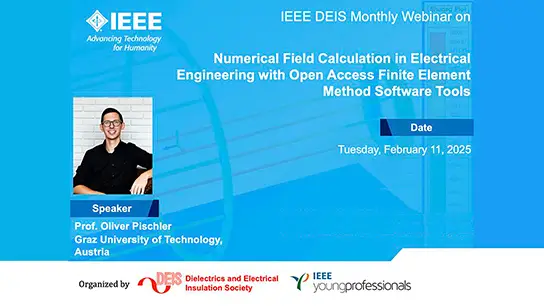Asset Management (Slides)
B. Hidayat, D. Robalino, G. Lal Rajora, M. Fritsch, P. Souvannalath
-
Members: FreePES
IEEE Members: $25.00
Non-members: $40.00Pages/Slides: 93
This panel session contains the following presentations:
1. Implementation Artificial Intelligence System Using Automated Object Detection (Identification, Monitoring, and Live Reporting) for Sustainability Asset Management on 5 Different Power Plant in Indonesia
Computer Vision have been expanding at a rapid pace over the last decade to reach equivalent of human vision level, even now it possible to emulate human vision for performing complex visual tasks faster and even more effective than human do. This paper discusses a novel approach to implement computer vision in asset management to revolutionizing various segments using intelligent customization solutions that we already develop over the last 3 years. This approach involves enhancements for Sense (media detection), Think (Algorithm), and Act (Notification and Reporting) which can be tailored to our needs like Unsafe Act and Condition. The case study involves implementation on 5 different major power plant in Indonesia and more in 2022-2023 with multi-billion-dollar asset base and spread over a variety of locations. With intelligent customization solutions that we developed, we are capable build an application that can detect various hazards and automatically report in real time to ensure that they managed, controlled, or eliminated. So the Risk of Losing Assets can be properly maintained. And it's not hard to think of other domain in asset management where the ability of computers vision can be leveraged. There is a certain area like preventive and predictive maintenance, Condition Base Monitoring, and Visual Inspection can be improved by computer vision using this intelligent customization solutions to help the organization improve their asset value.
2. Optimization of Power Transformer Insulation Dry-Out Process Using Dielectric Frequency Response (DFR)
The As with any other manufacturing process, quality of end-product and optimization of resources are reliable monitoring indexes to determine the efficiency, effectiveness, and profitability of a business. Power transformer manufacturers are keenly aware of global economic demands that drive them to rigorous quality control procedures and optimized resource administration. Therefore, for transformer manufacturers, each step in the manufacturing process is critical. Design, material selection, assembly, and testing are all interconnected. If any of these steps fails, the whole process is probably condemned to failure. The dry-out process of the core-coil assembly, the liquid insulation filtration, degasification, and the impregnation process of fluids into solid insulation materials are of utmost importance for the transformer manufacturer and the end-user. Throughout the service life of the transformer, the concentration of moisture in the solid insulation as well as the conductivity of the liquid insulation will rise as part of the insulation system's normal aging process. From a test and monitoring perspective, Dielectric Frequency Response (DFR, aka FDS - Frequency Domain Spectroscopy) has proven its ability to accurately determine the condition of solid, liquid, and solid-liquid insulation systems of power and distribution transformers. After twenty-plus years of field practice, experimental research, and technological development, DFR today can be used to provide high-quality monitoring for the optimization of the dry-out process. The DFR monitoring process for factory and field dry-out is described in this document using representative case studies.
3. Application of Machine Learning Techniques for Asset Management and Proactive Analysis in Power Systems
Asset Management is one of the foremost vital chapter within the power system's operation and, in general, within energy systems. Electric utilities are a capital-intensive industry with assets such as power transformers, power lines, and switch gears spread across a large geographic area. This paper will examine the business drivers, challenges, and innovations for maximizing power network reliability through Asset Management (AM) and it will present the main features of an open-source software platform that can be used for evaluation of indicators that will guide the process of making decisions. This tool is being developed inside a European research project named ATTEST. The machine learning algorithms implemented in the tool for AM and described in the paper can assess a set of indicators for evaluating asset health and prioritize preventive and proactive maintenance strategies. The paper describes the tool's outcomes, including an overall health score and risk ranking.
4. An Alternative Method for Dealing with Saturation in High-Frequency Current Transformers
High-frequency current transformers (HFCT) are used to measure partial discharges (PD) or other transient current pulses on power cables. In addition to the PD signal, the power cable usually transmits a high current at a frequency of 50 Hz (or 60 Hz). Both signals are superimposed and inductively coupled by the HFCT sensor. In most cases, the magnetic field of the 50 Hz current is strong enough to drive the sensor's ferrite core into saturation. Saturation falsifies the measurement results, reduces the HFCT sensitivity and leads to unwanted voltage peaks at the sensor output. To avoid saturation, air gaps are usually inserted into the ferrite core, but this also has the disadvantage of reduced PD detection capability. Recent publications now claim that saturation could be reduced without this drawback by a frequency dependent impedance at the HFCT output. We investigate this alternative method in this paper and present our results. To this end, we test whether this method actually reduces the saturation of the HFCT core or only its negative effects. For this purpose, saturation and its effects are first explained in detail. Then, the influence of the frequency dependent impedance on both 50 Hz signals and high-frequency PD signals is investigated. The method is critically reflected and compared with the air gap method. We can conclude that the studied method is a real alternative to air gaps in the ferrite core.
5. Determining Power Transformer Maintenance Plan Using Three-Dimensional Risk Matrix
This paper presents the power transformer maintenance decision technique using a three-dimensional risk matrix to compound risk acquisition from technical condition assessment, impact factor, and economic index aspect into maintenance decision-making. The risk in terms of technical conditions and impact factors are evaluated using scoring and weighting techniques to convert data from various important criteria and physical test results into transformer risk. In addition, the costs that occurred in transformer life are analyzed by using the equivalent uniform annual cost technique to determine the economic service life and compare it with the transformer aging to define the economic risk factor. The obtained three risk factors are then compounded by using the three-dimension risk matrix pattern to identify each transformer's overall risk. Based on the overall risk, an appropriate maintenance plan was established to achieve maximum effectiveness in terms of reliability, availability, and economic benefit. The decision technique presented in this paper is applied to nineteen substation power transformers of various ages and load areas in the Central 1 area of Electricite Du Laos (EDL). The results showed that the decision model could successfully determine appropriate maintenance programs with the ability of systematic decision-making. Finally, the power transformer's maintenance strategy can be effectively managed.


